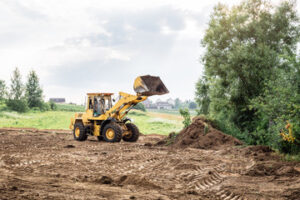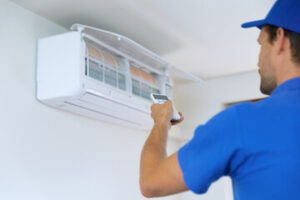Payroll administration is a crucial aspect of running any business. It involves keeping records of employee compensation and ensuring compliance with employment laws and tax codes.

It is an important role that requires a skilled professional who can handle a range of tasks and issues. It’s a good career option for people who enjoy working with numbers and staying up-to-date on regulations. Visit https://www.jgregorypeo.com to learn more.
Payroll processing is a multistep process that requires accuracy and timeliness. It includes calculating an employee’s gross earnings, determining deductions and withholdings and distributing the net paycheck to employees on time. It also involves paying state and federal taxes, submitting tax deposits, maintaining records and filing returns. In addition, payroll processing often involves communicating with employees to explain their pay and benefits.
Regardless of the size of an organization, all businesses need to follow the same basic components of payroll processing. This is true whether they manage payroll in-house or outsource it to a third party. The first step in the payroll process is obtaining the necessary paperwork, which can include employer identification number, state/local tax forms and W-4 information. This is especially important when an employee has a new job, or the company relocates to a different state.
Once the paperwork is in place, it’s time to start calculating payroll. This is where most mistakes happen, because it requires a lot of data input. If any of the data is entered incorrectly, it will carry over to the next step in the process and create a compound error that can be difficult to correct.
It’s also important to stay up-to-date on changes in federal and local laws governing payroll. These laws can change at any time, and staying informed will help you avoid costly penalties. You can stay up-to-date on these changes by subscribing to payroll news updates from a software provider or consulting a tax professional.
Another way to prevent errors is to partner with a third-party agency that can handle all aspects of payroll management. This can save you a lot of time and money, while still giving you the peace of mind that your payroll is being managed correctly.
Timekeeping records and attendance
Timekeeping is the process of logging employee time spent on work-related tasks. Accurate tracking helps ensure compliance with labor laws and that employees are paid accurately for their hours. It also helps you identify and address patterns of tardiness or absenteeism.
Manually updating employee attendance records is a time-consuming process. It’s easy to make mistakes when submitting the data, which can affect payroll processing and employee assessments. Additionally, keeping hardcopy employee attendance records creates mountains of paperwork that can take up valuable storage space and are difficult to comb through when looking for information.
The best way to handle time and attendance is by using an automated system that integrates with payroll. This streamlines the workflow, eliminates errors and saves your HR team time and effort.
An integrated workforce management solution provides a central hub for all aspects of your business. It includes tools for access control, scheduling, and time and attendance, all of which are integrated with one another to reduce manual data entry and minimize payroll errors. Some workforce management solutions also offer self-service portals for employees to request leave, check their accrued vacation and sick balance, and more.
A robust time and attendance system allows you to set policies that support a healthy work-life balance for your employees. It also makes it easier to track absences and ensures compliance with applicable labor laws. For example, non-exempt employees are required to be paid overtime for any work performed outside of their regular 40-hour workweek. This requires accurate and detailed records to ensure precise overtime payments. In addition, you can use your time and attendance system to track employee time at training seminars and other company-mandated events.
Payroll calculation
Payroll calculation is one of the most important aspects of payroll processing. It involves taking many different deductions and rates into account to determine how much each employee will receive as net pay for a given period. It also factors in overtime, insurance premiums, time and attendance records, and retirement contributions. It can be a complicated process that requires careful attention to detail and compliance with state and local wage and hour and tax laws.
There are a variety of ways to calculate payroll, including using an automated system or manually preparing and submitting payroll vouchers. An automated system can speed up the process by automatically calculating wages and tax deductions. It can also help ensure that all deductions and withholdings are accurately recorded and reported. In addition, the automated system can create reports that provide insight into payroll trends and errors.
Manual calculations can be more challenging and prone to errors. However, it is still a viable option for smaller businesses with fewer than 100 employees. This method requires accurate record-keeping, precise calculations and adherence to strict filing deadlines. It is also essential to keep in mind that even small mistakes can have costly consequences for both the employer and employee.
If you are unsure which method is best for your company, consult an expert. They can provide you with advice on the different options available and how to implement them in your business. They can also help you establish policies for handling errors and compliance with federal, state, and local laws. They can also help you choose a payroll software program that will meet your needs. They will also provide you with sample documents and templates to help you understand the different processes involved in a specific industry.
Taxes and deductions
Payroll deductions and withholdings are an essential part of the payroll process. They are a way for employers to withhold taxes from employees’ paychecks and make mandatory payments to state and federal agencies. A proper understanding of how to handle them can help companies avoid costly mistakes and stay compliant with local, state and federal regulations.
To determine how much to withhold each pay period, businesses use IRS form W-4 Employee’s Withholding Certificate and consider factors such as the worker’s location, benefit selections, and the type of work performed. The company also needs to calculate the tax rates and withholding amounts for each state, if applicable.
In addition to withholdings, companies may need to deduct voluntary contributions for retirement accounts and health insurance, as well as court-ordered garnishments. All of these deductions must be subtracted from an employee’s gross pay to calculate their net pay, or take-home pay. Finally, the company must deposit any withheld payroll taxes via EFTPS and report the worker’s income tax, Social Security and Medicare contributions, and FUTA to the IRS.
In larger businesses, the responsibility for payroll typically falls to the HR or finance department. However, small business owners often perform these tasks themselves, sometimes with the assistance of bookkeeping software or a professional accountant. Regardless of size, the process is complex and requires a thorough understanding of the relevant laws and regulations. Getting this right can save time and money for businesses, while helping them maintain the confidence of their employees. A comprehensive payroll solution like Rippling automates these processes and simplifies compliance for its users. It computes withholdings and deductions, completes mandatory tax forms and manages quarterly and annual tax payments for its clients.
Payroll reporting
Keeping up with payroll data via reports helps an organization to avoid underpaying or overpaying its employees, which can hurt cash flow. Keeping up with local, state and federal filing requirements is also important; if an organization misses a deadline, it can face fines. For example, a failure to file the appropriate IRS forms for workers’ compensation, taxes and other deductions can result in costly penalties. Payroll report schedules can vary by area, but most are produced on a quarterly or annual basis.
These reports provide an overall snapshot of a company’s payroll expenses on a period-by-period basis. They typically cover items like gross and net pay totals, tax withholding sums and all voluntary deductions. This report is a key component of any accounting system, as it helps organizations manage their compliance and financial planning.
Employee payroll reports help to ensure that all employees are paid for the work they perform, and it is common practice to include information about an employee’s paycheck, including hours worked, overtime, custom PTO policies and sick days. These reports can be sent to employees as attachments to their checks or accessed online. They also can be used to identify potential problems such as missing or incorrectly matched paycheck amounts, or deductions not taken.
There are many different types of payroll reports, and each one serves a unique purpose for the company. Some are designed to streamline compliance with regulatory requirements, such as the submission of Real Time Information (RTI) and end-of-tax-year reporting to HMRC. Others are designed to help with financial management, such as helping a business to forecast and budget its labor costs. Still, others are designed to support human resources tasks such as monitoring leave balances and compliance with company policy.








